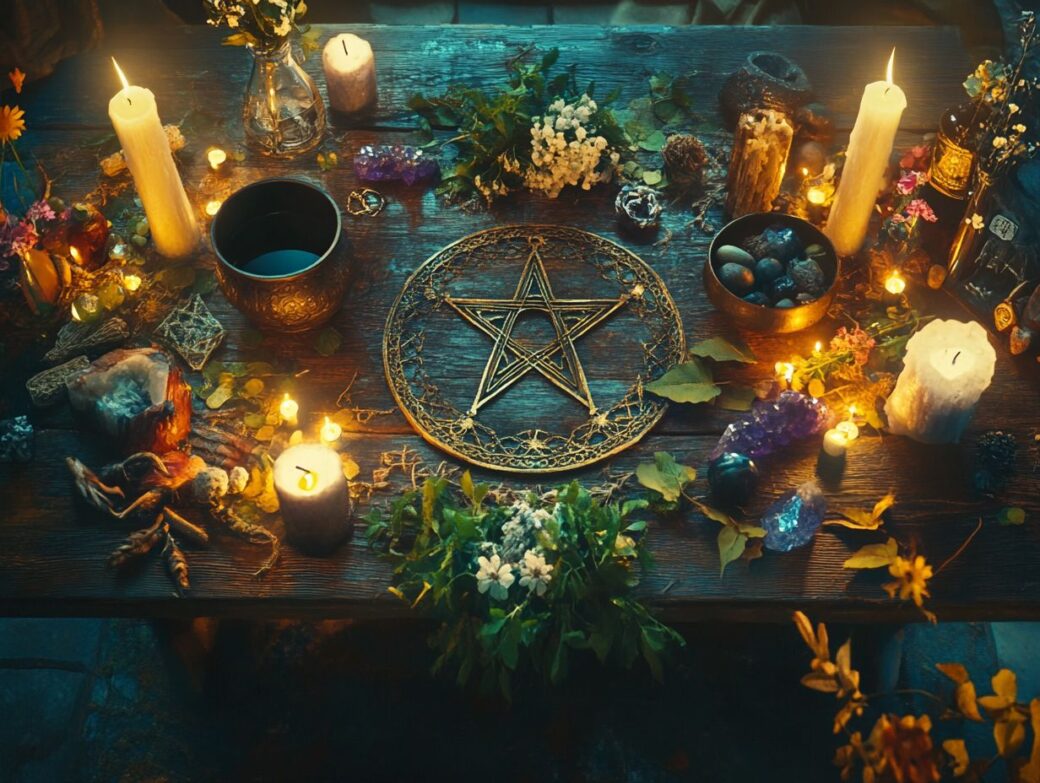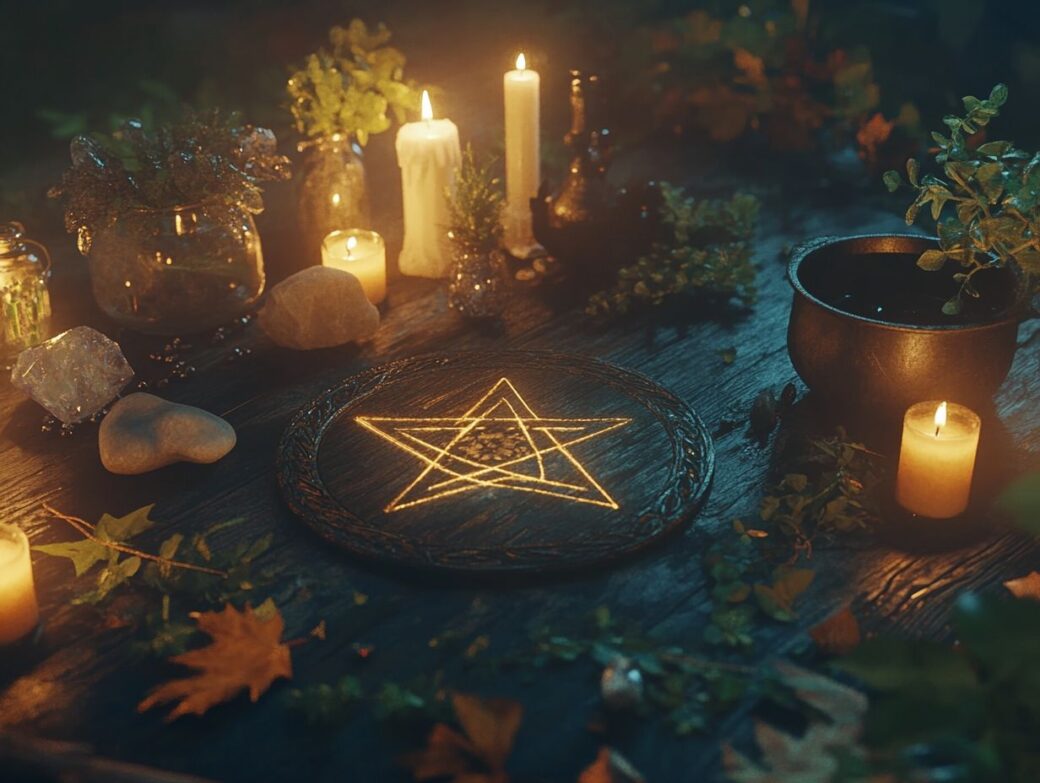Esoteric and pagan practices have long intrigued individuals seeking deeper spiritual connections and personal growth. This discussion aims to examine the rich tapestry of these belief systems, emphasizing the powerful symbols that convey profound meanings, the rituals that honor these traditions, and the sacred tools that facilitate spiritual work.
This exploration will elucidate how one can integrate these practices into daily life, thus fostering a more meaningful existence. We invite you to engage in this journey to uncover the essence of these compelling spiritual paths.
Table of Contents
Key Takeaways:
- Symbols hold deep meaning and serve as powerful tools in Esoteric and Pagan practices, representing universal concepts and principles.
- Rituals are an essential part of Esoteric and Pagan practices, serving as a means to connect with the divine and manifest intentions.
- Sacred tools, such as crystals and herbs, play a crucial role in Esoteric and Pagan practices, aiding in spiritual growth and connection to nature.
Defining Esoteric and Pagan Beliefs

Esoteric and Pagan beliefs represent a diverse array of spiritual traditions, practices, and symbols that establish a connection between individuals and the mystical forces of the universe. Frequently rooted in ancient cultures and natural elements—such as Earth, Fire, and Air—these belief systems emphasize personal transformation through an understanding of universal energy.
This journey towards give the power toment is often embodied in sacred symbols and practices that foster a deeper connection to the divine feminine and the cosmos.
The historical context of these practices extends over thousands of years, with their roots intertwined within various civilizations that revered nature and its elements. Rituals and magical traditions emerged as vital tools for community cohesion and personal reflection, enabling individuals to harness the energy that surrounds them.
The spiritual significance of these beliefs lies in their capacity to inspire introspection, allowing practitioners to recognize and embrace their intrinsic power. By engaging with universal energy, individuals can learn to manifest their intentions, heal from past traumas, and cultivate resilience, thereby embracing a path of personal give the power toment informed by the enduring wisdom of witchcraft and other sacred arts.
Symbols in Esoteric and Pagan Practices
Symbols hold a significant position in esoteric and pagan practices, acting as conduits for spiritual energy and representing profound meanings within various magical traditions.
Each symbol, including the pentacle, triple moon, and Hecate’s wheel, possesses distinct significance, offering practitioners a means of protection as well as facilitating ritual enhancement and personal transformation.
Meaning and Significance of Common Symbols

Common symbols in witchcraft, such as the ankh and spiral, are imbued with profound meaning and significance, often representing concepts of life, rebirth, and the continuous cycle of existence. The ankh, for example, symbolizes eternal life and divine protection, while spiral symbolism frequently denotes personal growth and the journey toward self-awareness.
In esoteric and pagan practices, these symbols function as powerful tools for practitioners aiming to connect with deeper dimensions of their spirituality.
For instance, sigil creation—a method in which specific intentions are encoded into symbols—enables individuals to manifest their desires and transform their realities. Additionally, spirals often appear in various rituals, where their circular form encapsulates the inherent human pursuit of knowledge and evolution.
By integrating these symbols into their daily lives, individuals can develop a personal practice that not only honors tradition but also nurtures a profound sense of connection to the universe.
Rituals in Esoteric and Pagan Practices
Rituals constitute the foundation of esoteric and pagan practices, serving as significant mechanisms for connecting with the universe and harnessing spiritual energy for diverse purposes.
These rituals, which frequently incorporate aspects of witchcraft protection and ritual enhancement, provide structured pathways for practitioners as they navigate their intricate journeys toward give the power toment and self-discovery.
Types of Rituals and Their Purpose

Various types of rituals exist within esoteric and pagan traditions, each serving distinct purposes in the journey of give the power toment and personal transformation. These practices range from seasonal celebrations and full moon ceremonies to rites of passage and healing rituals, all designed to honor the connection between the practitioner, sacred tools, and universal energy.
These rituals frequently incorporate symbolic representations, such as candles, crystals, and herbs, which are utilized to channel specific intentions and energies. Seasonal celebrations, including solstices and equinoxes, signify significant shifts in the natural world, enabling practitioners to align their energies with the cycles of nature.
Full moon ceremonies provide powerful opportunities for reflection and release, while rites of passage commemorate milestones, fostering a sense of community and shared experience.
Healing rituals concentrate on nurturing the mind, body, and spirit, thereby promoting deeper self-awareness and resilience. Ultimately, these sacred practices serve not only as tools for personal growth but also as pathways that enhance the practitioner’s spiritual connection, integrating them into the broader fabric of the universe.
Sacred Tools in Esoteric and Pagan Practices
Sacred tools are integral to esoteric and pagan practices, serving as physical manifestations of spiritual energy and facilitating practitioners in their magical endeavors.
These tools, which range from simple witchcraft symbols to more complex items such as the Celtic shield knot or sigils, enhance rituals and foster a deeper connection to the divine.
Common Tools and Their Uses

Common tools utilized in magical practices include the chalice, Vegvisir, and Helm of Awe, each serving distinct purposes in enhancing rituals and directing spiritual energy. The chalice often symbolizes the divine feminine and is employed for offerings, while the Vegvisir acts as a symbol of guidance during a labyrinthine journey.
The Helm of Awe, recognized for its protective qualities, plays a vital role in safeguarding individuals during their spiritual pursuits. Each of these items not only holds significant cultural importance but also functions as a conduit through which practitioners can focus their intent.
In the context of rituals, these tools facilitate practitioners’ connections with unseen forces, enabling them to harness energies to manifest desired outcomes. Whether invoking the nurturing aspects associated with the chalice, seeking guidance through the Vegvisir, or activating the protective energies of the Helm of Awe, the deliberate inclusion of such artifacts is essential for the effectiveness and depth of esoteric and pagan practices.
Incorporating Esoteric and Pagan Practices into Daily Life
Incorporating esoteric and pagan practices into daily life can significantly enhance an individual’s spiritual energy and give the power toment journey, offering avenues for personal transformation and fostering deeper connections with the universe.
By embracing these magical traditions and integrating them into everyday routines, individuals can cultivate a more mindful and intentional approach to living.
Ways to Integrate Beliefs and Practices into Daily Routine
Integrating esoteric and pagan beliefs into daily routines can be accomplished through straightforward yet impactful practices, such as establishing rituals around everyday activities or incorporating symbols of witchcraft into one’s personal environment. By infusing mundane tasks with intentionality, individuals have the opportunity to transform their daily experiences into avenues for personal growth and a deeper connection with magical traditions.
For example, one might consider:
- Lighting a candle prior to meals as a means of blessing the food, thereby invoking abundance and fostering gratitude.
- Placing crystals throughout the home to attract positive energy and enhance the vibrational quality of the space.
- Engaging in mindfulness during walks in nature to strengthen one’s connection to the earth, rendering each stroll a sacred experience.
- Journaling thoughts and dreams to give the power to individuals to access their intuition and reflect upon spiritual insights.
By incorporating these practices into daily life, individuals can create a tapestry of spiritual significance that enriches their personal journey.
Checkout 20 Magical Pagan and Wiccan Symbols.









